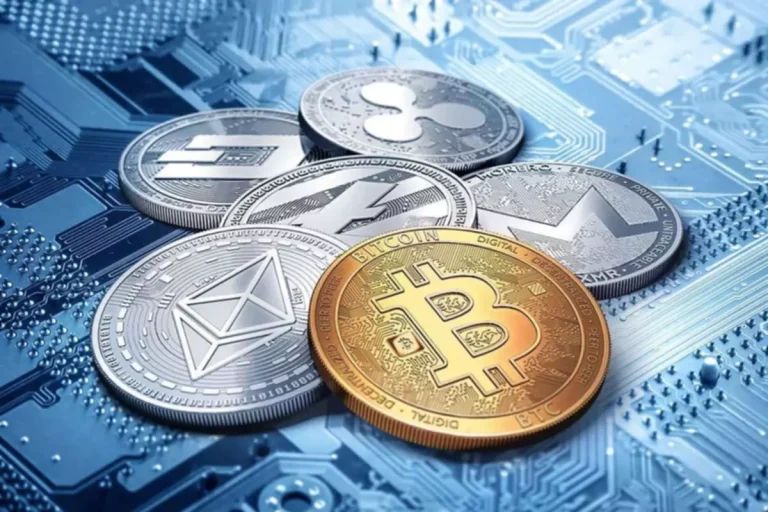Content
As stablecoins continue to gain traction, they are poised to revolutionize payment systems across various sectors by providing faster, cheaper, and more efficient alternatives to traditional financial methods. Traditional cross-border payments involve multiple intermediaries, such as correspondent banks, clearinghouses, and payment processors. These fees can accumulate, significantly increasing the overall cost of the transaction. For businesses, especially small and medium enterprises, these high costs can significantly impact their bottom line. The cross-border payments programme covers a range Digital asset of initiatives, including improvements to the cross-border interoperability of existing infrastructures and arrangements.
Stablecoin Use Cases: Remittances and Cross-Border Payments
Stablecoin regulations are constantly evolving, particularly in key markets like the United States, the European Union, and Latin America. This creates uncertainty for businesses looking to integrate them into their models. See how USDC provides a stable medium of exchange and store of value for DeFi participants. This has what are stablecoin payments led to total stablecoins in circulation being worth around US$ 170 billion with monthly volumes of around US$ 460 billion being traded. The table below from McKinsey does a good job at painting the global picture of “low-value payments” and their anticipated growth across different vectors.
The Two Most Common Stablecoins
But it was never truly taken seriously by the traditional financial sector and its composite institutions, the U.S. regulatory desert aside. Sportsbet.io partners with snooker events, merging crypto and sports for a new https://www.xcritical.com/ era in fintech and blockchain technology. Stablecoins can simplify accounting and reporting tasks, as every transaction is recorded on the blockchain. Sling Money doesn’t charge fees on P2P transfers but makes some commission when converting crypto to fiat or vice versa. They intend to make additional revenue from debit cards and other features down the line. JP Morgan created the JPM Coin to facilitate instantaneous payments between institutional clients.
Trade War Threats: How Europe Might Respond

While stablecoins offer compelling benefits for FX payments, several challenges remain, including regulatory uncertainty, scalability issues, and the need for interoperability between fintechs and the broader financial system. Traditional cross-border payments often involve high fees and long processing times. However, stablecoins eliminate the need for intermediaries and streamline the payment process, resulting in significant cost savings and reduced fees for users. By leveraging blockchain technology, stablecoins eliminate the need for intermediaries, reducing transaction costs significantly.

With AFT, the Nigerian business owner can convert NGN into AFT, transfer it to the Kenyan business owner, who can then either convert it to KES as needed or use it for onward payment to another business in Rwanda. All conversions to and from AFT would remain relatively stable in terms of exchange rates, offering broad acceptance and utility. As the financial landscape continues to evolve, stablecoins are poised to play a central role in fostering global economic connectivity and inclusion.
You can experience increased speed and efficiency in cross-border payments with the use of stablecoins. Stablecoins, with their unique characteristics, offer several advantages over traditional payment methods. Leveraging decentralized blockchain networks, stablecoin transactions bypass traditional intermediaries, reducing overall transaction costs. If you value speed, efficiency, and security in your payments, stablecoins are the perfect choice for funding your cross-border transactions. At Reap, we fully recognise the transformative potential of stablecoins and have integrated them into our solutions, empowering businesses to optimise their payments. The main benefit includes cheap, fast cross border money transfers while risk factors may include lack of set stablecoin regulations or potential technical glitches during transactions.

However, this can only be achieved with thoughtful regulation and strategic collaboration between governments, financial institutions, and fintech innovators. If Africa seizes this opportunity with foresight and agility, it can unlock a new era of economic growth, connecting the continent to the broader global economy in ways previously unimaginable. The time to act is now—because in the rapidly shifting world of digital finance, standing still is not an option. With global reach and stable value, stablecoins are increasingly becoming a preferred choice for online and in-person purchases. They offer merchants lower transaction fees compared to traditional payment processors and enable faster settlements.
Fourth, it evaluates the potential impact of their use on the monetary policy, financial stability and payment functions of central banks. Throughout the report it acknowledges the importance of jurisdictional differences regarding regulatory frameworks and macroeconomic conditions. This means that every transaction can be traced and verified, ensuring accountability and reducing the risk of fraud or manipulation. Additionally, stablecoin issuers often provide real-time information about the reserves backing the coins, offering further transparency into their value and stability. The issuing company then holds the fiat currency in reserves and may keep these reserves in a bank account, money market funds or other low-risk financial instruments.
This loosely translates to “press the buttons on your computer and earn in dollars”. As a bantu speaker, I’m always fascinated by how we tend to add emphasis by repeating a word so the literal translation is “press press your computer so that it removes dollars”. Jokes aside, I found this interesting because on one hand you could argue that it’s a government clutching at straws and hoping that digital jobs will solve youth unemployment. However, if you go by the assumption that governments only deal with facts, then it is a realisation that digital jobs are the future and Kenyan youths are well advised to get on this trend.
Stablecoins play a central role in DeFi, serving as a critical building block for a wide range of dApps. They enable lending, borrowing, and yield farming by providing a stable and predictable medium of exchange. Additionally, stablecoins facilitate liquidity pools and trading pairs, further expanding the functionality and appeal of DeFi platforms.
Cryptocurrency investments are volatile and high risk in nature; it is possible to lose your entire investment. This helps eliminate the uncertainty of fluctuating forex rates and ensures that the intended amount is received by the recipient without any surprises or additional costs. This partnership aims to meet the increasing demand for easy-to-use stablecoin payment options in Southeast Asia and beyond. In my next piece, I will delve deeper into how the proposed AFT can work, including details on governance, peg mechanisms, regulatory pathways, and consumer protection measures. OneSafe brings together your crypto and banking needs in one simple, powerful platform.
- Stablecoin payments have become the backbone of the entire crypto ecosystem as they provide a stable and efficient method for global transactions.
- Reap (Remit) Limited does not deal in any virtual assets and does not provide any virtual assets services.
- As a bantu speaker, I’m always fascinated by how we tend to add emphasis by repeating a word so the literal translation is “press press your computer so that it removes dollars”.
- As the financial landscape continues to evolve, stablecoins are poised to play a central role in fostering global economic connectivity and inclusion.
- Stablecoins require only internet access and a digital wallet, eliminating traditional barriers such as the need for a bank account.
- This decentralized nature of stablecoins eliminates the need for intermediaries, reducing the risk of data breaches and hacking attempts.
With stablecoins, you no longer have to wait for days or worry about losing money due to currency fluctuations when sending money across borders. In Africa, the conversation around cryptocurrency remains fraught with hesitation, as many countries are reluctant to embrace it fully. But with the rising adoption rates, growing customer preferences, and its proven utility in streamlining global trade, a cautious stance risks leaving the continent behind in the race for global economic opportunities. Where stablecoins offer superior benefits, customers will naturally gravitate toward them,” Miles Paschini, CEO at FV Bank, told PYMNTS. As evidenced by a Monday (Jan. 13) report from the Federal Reserve Bank of Atlanta, stablecoins, increasingly heralded as the bridge between traditional finance and the cryptocurrency world, have started to change that dynamic. For companies managing international capital flows, stablecoins represent more than just a technological tool — they are an enabler for operating in a globalized world.
Stablecoins offer a vital means for unbanked individuals to access financial services, enabling secure transactions without traditional banking barriers. Fluctuating forex rates can pose challenges for cross-border payments and remittances. When the exchange rates between currencies change constantly, it makes it difficult for senders and recipients to predict how much money will be received after the conversion. Cross-border payments and remittances face multiple challenges, including the involvement of multiple intermediaries, friction from differing domestic payment networks, and fluctuating forex rates. PYMNTS Intelligence found that using cryptocurrencies for cross-border payments could be the winning use case that the sector has been looking for. The research found that blockchain-based cross-border solutions, particularly stablecoins, are being embraced by firms looking to find a better way to transact and expand internationally.
In this blog post, we will explore the role of stablecoins in cross-border payments, their advantages and disadvantages, and the challenges and opportunities they present for businesses and consumers alike. Stablecoins used for cross-border payments offer benefits like faster transactions and lower costs, but drawbacks include regulatory concerns and volatility risks. These digital currencies are disrupting traditional banking systems by providing alternative options for international transactions. Additionally, stablecoins offer greater transparency and security compared to traditional payment methods.
Unlike other cryptocurrencies that experience significant price fluctuations, stablecoins are designed to provide price stability by being pegged to hard dollars on a one-for-one ratio. This transparency provides businesses with peace of mind as they can monitor and verify the progress of their payments. By fostering trust in the process, this transparency helps build confidence in cross-border transactions.
